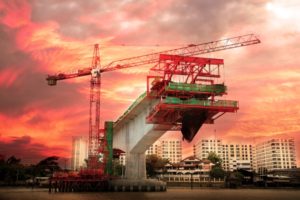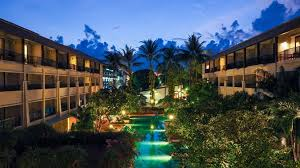 Five reasons Thailand construction is hot again
Five reasons Thailand construction is hot again
Cementing the kingdom’s status as a bustling construction market
Thailand is currently one of the most exciting hubs for contractors in Southeast Asia today, with a construction market value estimated at USD41.4 billion last year, according to a white paper released last week by corporate strategy consulting firm Solidiance.
New buildings and infrastructures amassed throughout the kingdom at a faster clip over the last few years, a trend that would indicate an especially busy year ahead for Thai real estate. Overall, the number of buildings in the country increased 1.4 percent on average every year between 2012 and 2014.
We break down the likeliest growth engines for all this construction activity, according to Solidiance’s latest research.
Public infrastructure
Of the USD41.4 billion siphoned into Thai construction last year, USD23.4 billion can be traced to the public sector. This mainly covers lavish public expenditure on infrastructure, aligning with the Thai government’s renewed thrust toward improving the country’s transportation system. Since 2015, transport officials have executed plans to increase infrastructure investments in Bangkok’s mass rapid transit line, although delays have been widely reported.
Growing condo market in metropolitan Bangkok
Such increase in public works have literally widened the path to residential construction in the Thai capital. With public transit lines currently under construction, Bangkok’s city center is gradually expanding, Solidiance researchers contended. New residential construction projects are still packed within Bangkok, but the condominium market is expanding around the city’s vicinity because of the expansive subway infrastructure. Representing more than half of newly registered housing units in the country, condo construction grew 24.2 percent between 2010 and 2014.
Construction activity for low-rise condos
Worthy of note is the overall reduction in the average size of condominiums and industrial buildings, in addition to the increasing popularity of low-rise condos. This phenomenon explains why the overall built area of buildings in the kingdom decreased by an average of 2.2 percent per year between 2012 and 2014. Demand for construction rather centered on the popularity of twin houses, a housing type whose number grew 41.7 percent in the same period. The number of townhouses closely followed, growing at an average of 5.7 percent per year.
Growing tourism
While Thailand has always been a tourist haven, 2016 has been especially good to the country in terms of visitor arrivals, despite recent political upheavals. Chinese tourist numbers were especially impressive, growing by an average of 41.7 percent between 2012 and 2015. Such growth posited higher construction activity in commercial buildings, especially restaurants and shopping malls. The overall number of new commercial construction grew 6.5 percent between 2012 and 2014. Led by the Thai Shopping Center Association (TSCA), mall developers have planned an outlay of USD2.83 billion over the next three years on expansions and new store openings.
Attractive SEZ
The growth of Thailand’s economic zones has been nothing short of spectacular, galvanising a spike in construction work. Industrial developers are increasingly attracted to Special Economic Zones (SEZ), as the government continues to dangle tax incentive schemes, Board of Investments (BOI) privileges, and special funds. Construction is expected to majorly hinge on the Eastern Economic Corridor, with ambitious air, rail and sea links being planned around the area. Overall, new industrial construction in the country grew 13 percent from 2012 to 2014.
Source: http://www.property-report.com/5-reasons-thai-construction-is-hot-again/



